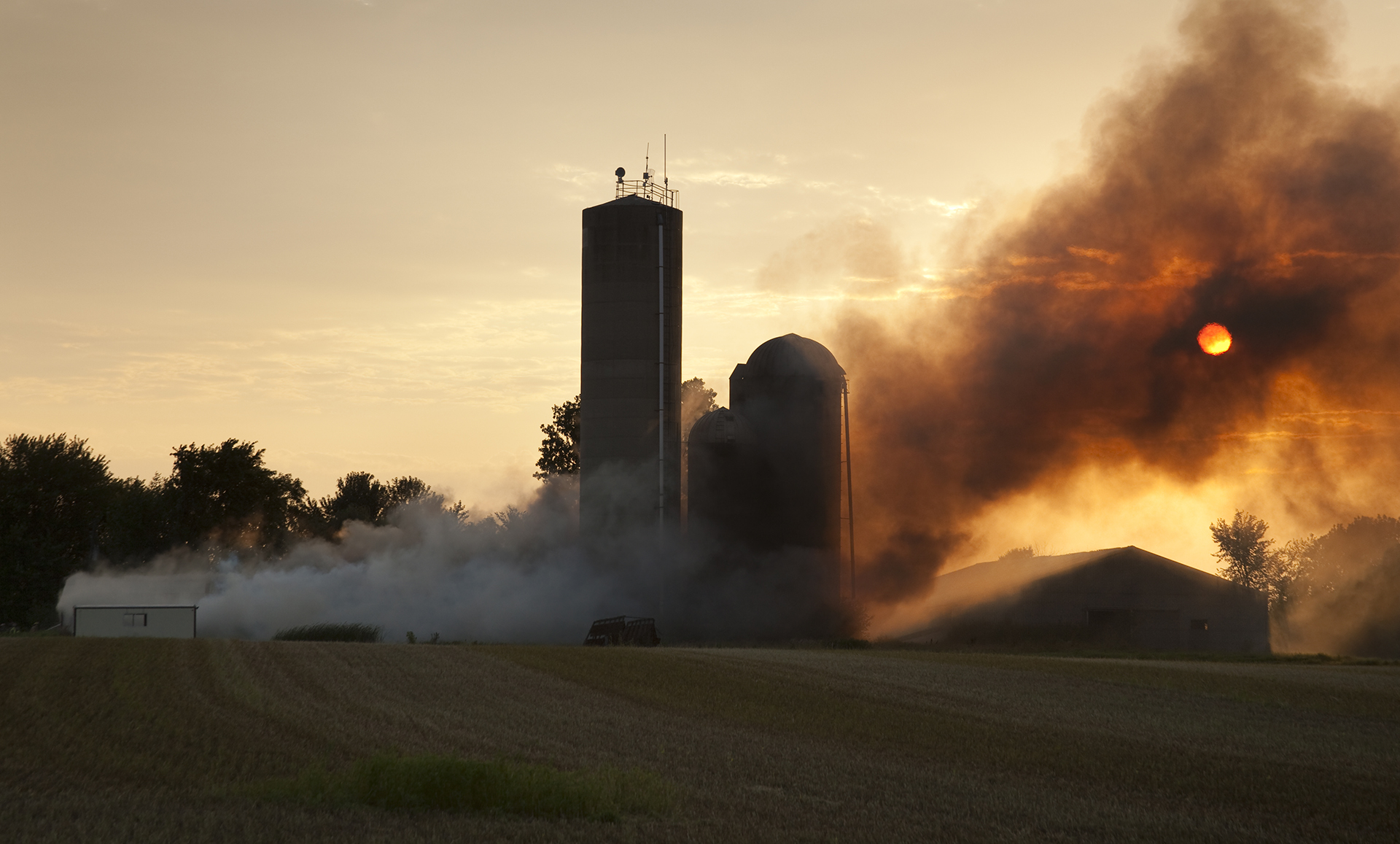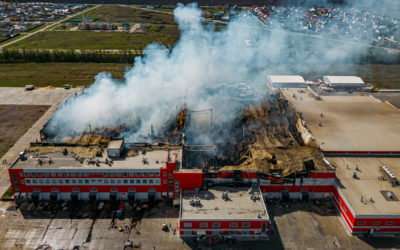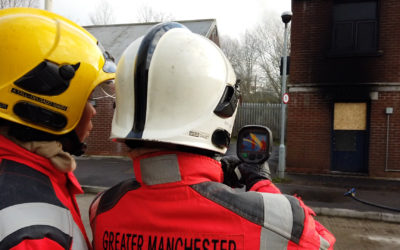A fire in a silo is an unusual event for most fire and rescue services and differs in many ways from conventional fires. In many cases, fires start as a pyrolysis fire as a result of self-heating inside the material stored in the silo.
Definition
Pyrolysis fire is an ember fire that occurs in a highly oxygen-restricted environment. In silo fires, it usually occurs deep inside the material and is very difficult to detect.
Challenges with silo fires
A silo fire is often difficult to detect and is likely to have been burning for a while before it is discovered. Self-ignition in the form of pyrolysis fire usually occurs deep inside the material. This consumes the oxygen in the silo – creating hot and humid combustion gases, which slowly spread upwards in the silo. These gases are toxic and flammable, posing a significant risk to both plant personnel and fire and rescue services. Opening up the silo for better access could negatively affect the situation with a high risk of gas explosions, open fires, and fire spread within the plant, which would result in major damage.
Limited Response Options
Unlike a fire in a building, a silo fire has very limited response options as there is usually only very limited access from the silo base or silo top. In the case of fires in larger freestanding silos, e.g. for the storage of solid biofuels, the silo diameter is often 20-30 m. This poses major practical problems for the emergency services.

Cobra: An effective tool for fire gas cooling
Cobra can be used at suspected ember fires in smaller silo fires, such as chip silos or silage silos. If hot spots can be located, e.g. by heat measurements on the silo surface with a thermal imaging camera (TIC), a targeted intervention can be made.
Cobra enables piercing with a high water pressure and abrasive, which allows the water to reach a number of metres into the material.
Cobra can be used with additive both in a pyrolysis fire and in a developed surface fire. The hole from piercing the silo is minimal and the fine distribution of the water in combination with an enclosed space allows rapid cooling of the pyrolysis or fire gases while dampening a possible surface fire.
NOTE!
Each plant has its own conditions, and each fire is unique, so specific risk assessments are required on how to carry out an extinguishing operation in detail.
Cobra Benefits
Safer work environment.
Firefighters can carry out a safer operation as Cobra allows an attack from the outside, compared to opening the silo, which could lead to an increased fire development with high risks of smoke gas explosions, open fire, and fire spread within the plant.
Quick intervention.
Getting equipment in place to fight a fire in a silo can use up valuable time. Utilising Cobra reduces the amount of time taken to get water into the fire. The equipment is light in weight and easy to handle, which enables rapid deployment. The training programme that underpins Cobra gives fire crews the ability and confidence to deploy Cobra very quickly on arrival.
Limits water use.
As Cobra only uses 60 litres of water per minute, an 1800 litre water tank will last 30 minutes if Cobra is used continuously. This gives fire crews an opportunity to secure additional water supply where needed. This is very important in areas where water supplies are scarce.
Reduces environmental impact from the fire.
The rapid fire and fire gas suppression associated with Cobra means that less toxic emissions get into the atmosphere. Reduced water consumption means less contaminated water runoff gets into watercourses.
Benefits of Cobra use
- Safer for firefighters
- No need to open up the silo for better access
- Efficient fire gas cooling
- Quick and easy targeted intervention
- Less water needed
- Less toxic emissions and contaminated water runoff
Source: Persson, H. (2012). Brand i silo – Brandsläckning samt förebyggande och förberedande åtgärder. Myndigheten för samhällsskydd och beredskap (MSB). Publikationsnummer: MSB386.
Source: Spjuth, M. (2020). En jämförelse av skärsläckare och dimspik för bekämpning av torvbränder Penetrerings- och spridningsförmåga i 1 meter djupt torvlager. Institutionen för samhällsbyggnad och naturresurser, Luleå Tekniska Universitet.


